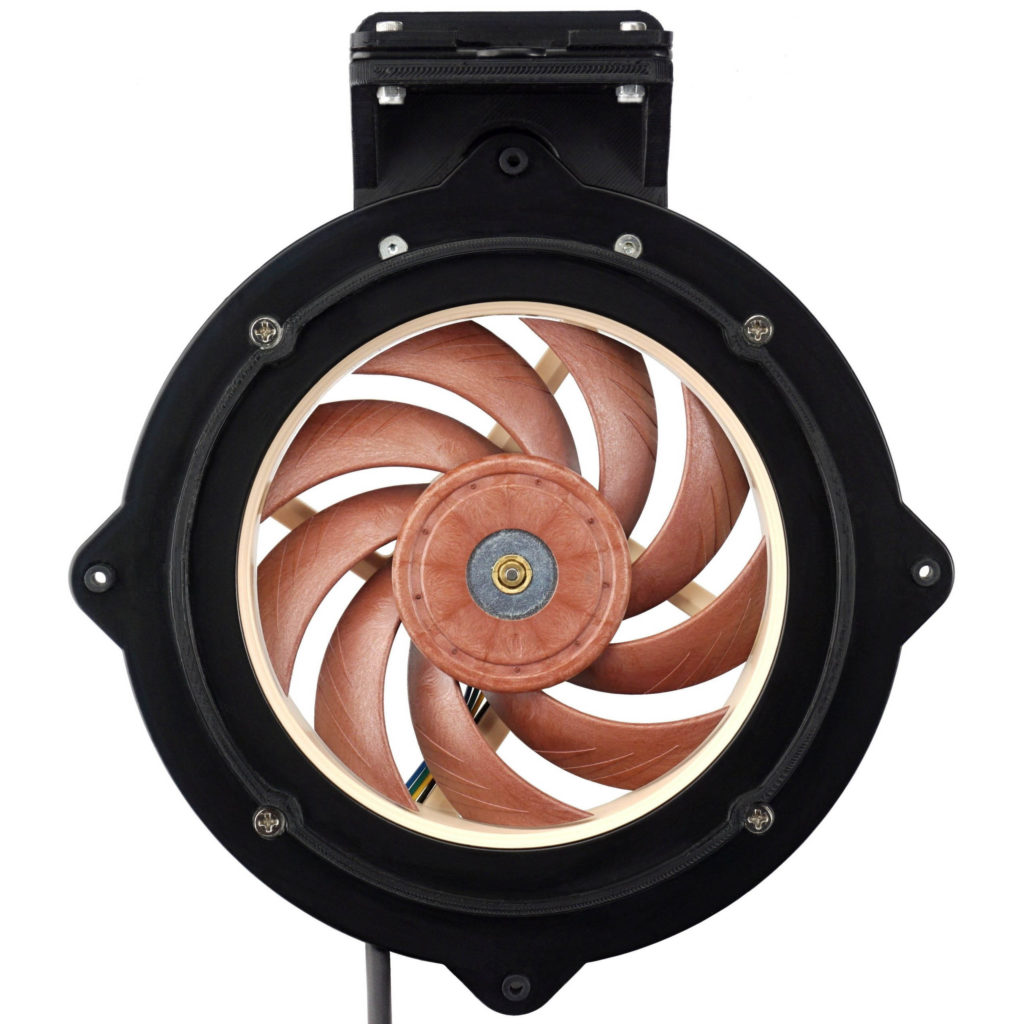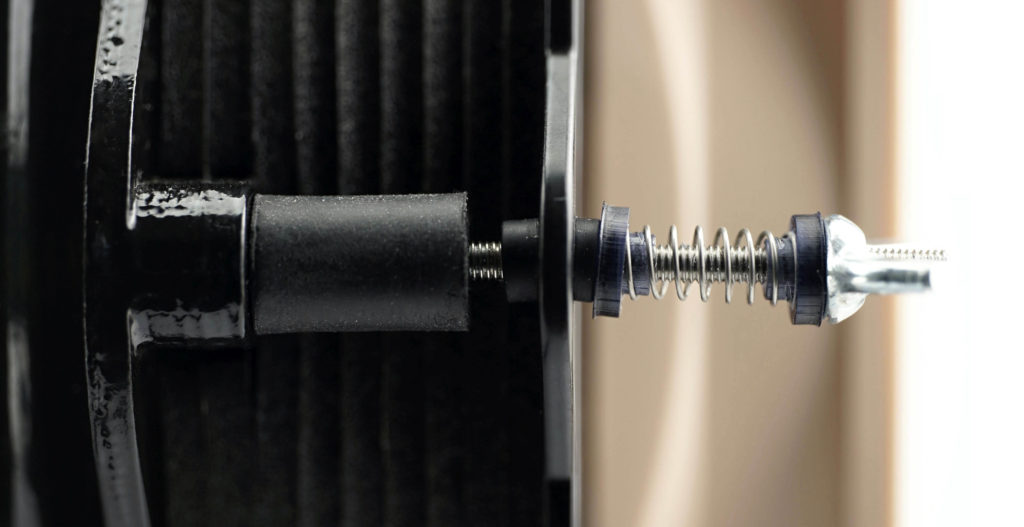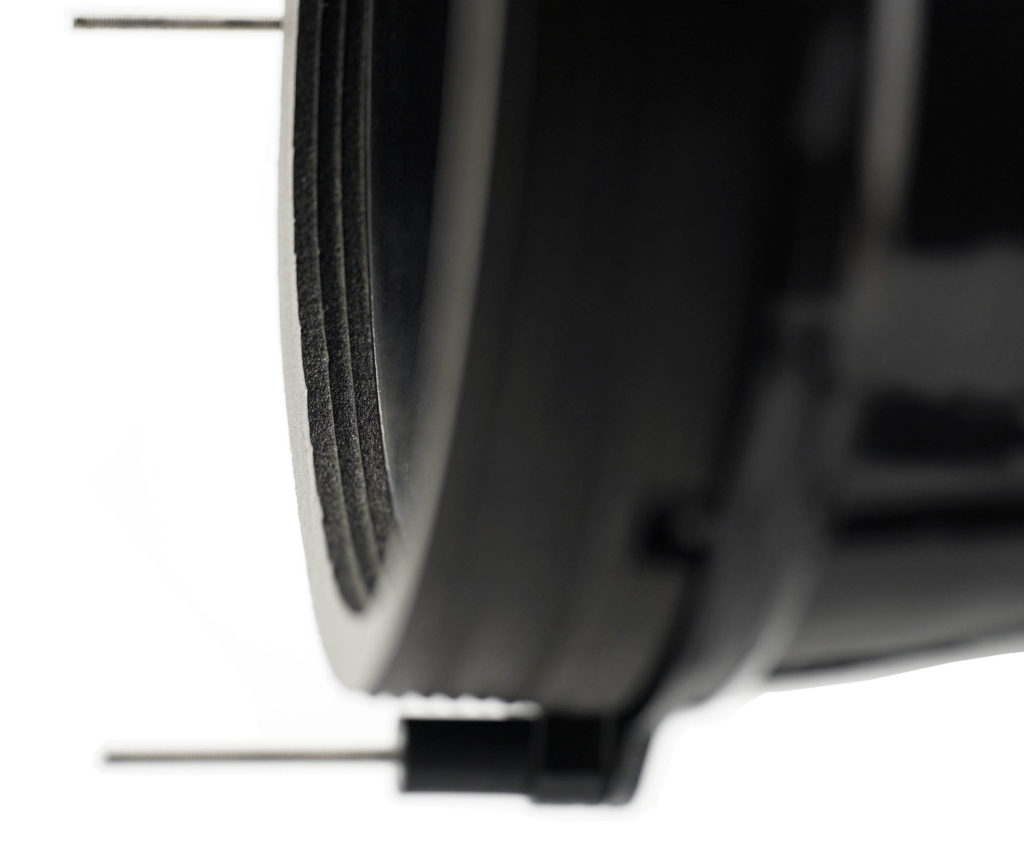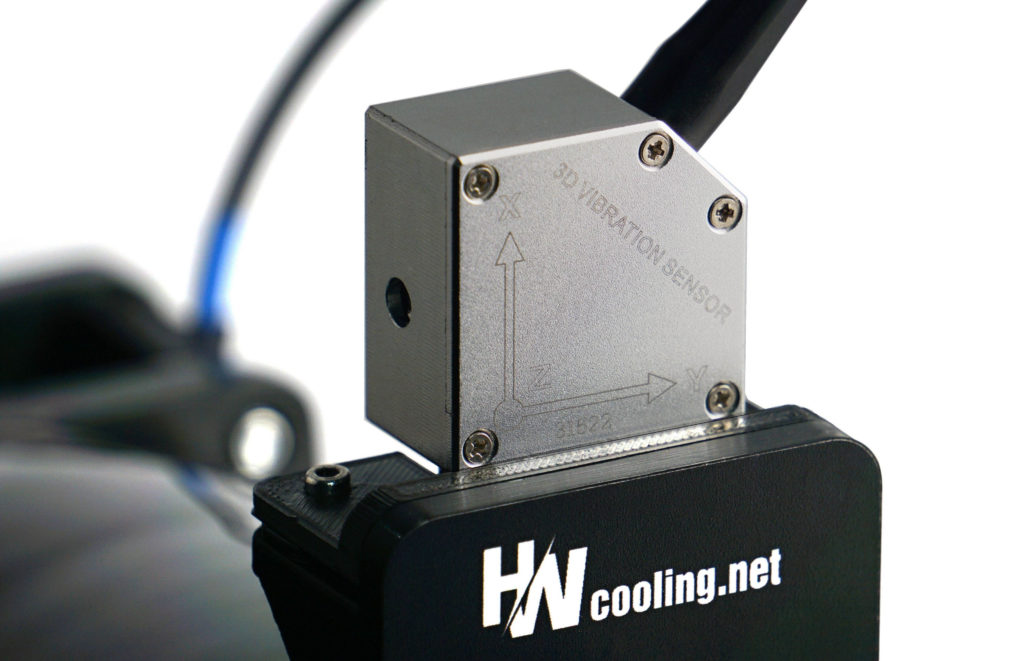Mounting and vibration measurement
We were very excited to see the results of the Grand Tornado 120. It looks good geometrically and is also one of the cheapest LCP models out there. Scythe has also informed us that the Grand Tornado 120 is set to outperform the legendary Gentle Typhoon (D1225C). And it’s true, it does outperform it, though perhaps in different ways than you’d expect. But the LCP fan from Scythe gets along really well with radiators.
Mounting and vibration measurement
Naturally, each tested fan must first be properly mounted. With all that we want to measure, and with the kind of precision that is required for relevant measurements, even the smallest details matter. The whole mounting system is quite complex and we are happy to have fine-tuned it to maximum satisfaction. Even if it meant hundreds of hours of tinkering. What’s so complicated about it? There’s more.
The fans are installed to the multi-purpose bracket. The substrate is a 2 mm thick metal plate to which the fan is attached, or the fan is attached together with an obstacle (e.g. a filter, hexagonal grille or liquid cooler radiator).

For correct and always equal pressure, the fans are always tightened with the same force with a torque screwdriver. If this were not the case, joints and clearances in the assembly could arise, in short, uneven conditions with undesirable distortion. For example, also for vibration measurement. On top of the fan mount there is also a bracket for the three-axis vibrometer sensor. The latter is magnetically attached via a steel insert, on which the sensor exerts a force of one kilogram and, thanks to the stop, is also always in the same place and in the same contact with the rest of the structure. These are the basics in terms of repeatability of measurements.
In order to capture the intensity at the highest possible resolution, the tray of the holder cannot be too heavy and at the same time it must be strong enough not to twist. This would again cause various distortions. Therefore, we used a hard (H19) aluminium (AL99.5) plate for the construction of the holder, whose weight is just enough so that free movement is not significantly restricted.
To achieve the finest possible resolution for vibration measurement, soft rubber inserts are provided in the mounting holes through which the bracket is installed to the tunnel. And just behind these inserts are silent blocks with a very low hardness of 30 Shore. These are also used so that the vibrations of the fans don’t spread to the tunnel skeleton. If this were to happen, then for fans with more intense vibrations, this secondary noise component, which is not related to the aerodynamic sound of the fan, would also be reflected in the noise measurement results.

This is where it is good to have ideal conditions, even though they are unattainable in practice, because fan vibrations will always be transmitted to the case skeleton to some degree. But each cabinet will react differently to them, or rather the final noise level will depend on a number of factors, starting with the materials used. Therefore, it is a good idea to filter out this extra noise component in tests and in practice take into account the measured vibration intensities. The higher these vibrations are, the higher the noise addition has to be taken into account.
The silent blocks are naturally formatted to offset the bracket a bit from the rest of the tunnel, otherwise they wouldn’t make sense. This creates a gap that is sealed across the entire surface with a soft foam seal with closed cell structure (i.e., it’s airtight).

To properly center the fan impeller in relation to the other elements, the bracket includes a protruding frame that follows the inner contour of the seal. And to make matters even more complicated, the frame with the tested fan is pressed against this seal by a small force of compression springs, which in turn is set with the highest possible resolution for vibration measurement in mind and at the same time so that sufficient pressure is generated to maintain a flawless seal.
Vibration is measured with a Landtek VM-6380 vibration meter. It records the vibration speed (in mm) per second in all axes (X, Y, Z). For quick orientation, we calculate a 3D vector from the measured values and graph the “total” vibration intensity. But you can also find your results if you are only interested in a specific axis.
The most complicated part of the tunnel is behind us, and we’ll move on in the next chapter. But we will still stay at the beginning of the tunnel, we will just turn to the peripheries on the sides.
- Contents
- Scythe Grand Tornado 120 in detail
- Overview of specifications from the manufacturer
- Basis of the methodology, the wind tunnel
- Mounting and vibration measurement
- Initial warm-up and speed recording
- Base 6 equal noise levels...
- ... and sound color (frequency characteristic)
- Measurement of static pressure...
- ... and of airflow
- Everything changes with obstacles
- How we measure power draw and motor power
- Measuring the intensity (and power draw) of lighting
- Results: Speed
- Results: Airflow w/o obstacles
- Results: Airflow through a nylon filter
- Results: Airflow through a plastic filter
- Results: Airflow through a hexagonal grille
- Results: Airflow through a thinner radiator
- Results: Airflow through a thicker radiator
- Results: Static pressure w/o obstacles
- Results: Static pressure through a nylon filter
- Results: Static pressure through a plastic filter
- Results: Static pressure through a hexagonal grille
- Results: Static pressure through a thinner radiator
- Results: Static pressure through a thicker radiator
- Results: Static pressure, efficiency depending on orientation
- Reality vs. specifications
- Results: Frequency response of sound w/o obstacles
- Results: Frequency response of sound with a dust filter
- Results: Frequency response of sound with a hexagonal grille
- Results: Frequency response of sound with a radiator
- Results: Vibration, in total (3D vector length)
- Results: Vibration, X-axis
- Results: Vibration, Y-axis
- Results: Vibration, Z-axis
- Results: Power draw (and motor power)
- Results: Cooling performance per watt, airflow
- Results: Cooling performance per watt, static pressure
- Airflow per euro
- Static pressure per euro
- Results: Lighting – LED luminance and power draw
- Results: LED to motor power draw ratio
- Evaluation












DNF at the very high target of 31dB(A) means it isn’t cheap, it means no matter the price it’s too expensive
additionally knowing it starts at around 680RPM and it still doesn’t pass that target means it’s just bad acoustically
it may find a niche, people are frequently mentioning this or that dethroning Noctua while the performance is only slightly higher at one very specific and extremely high noise target so at some point it may be a decent option, but I just wouldn’t bother, no reason to stand that noise when I can just set A12x25 a tiny bit below this ones starting speed and have it perform better and stay silent
This is subjective. It depends on who is looking for what. If the priority is the highest possible airflow regardless of noise level, while also weighing low vibration or extra durability, then the Grand Tornado 120 can be a great choice. In the context of that potentially high durability (if Scythe doesn’t exaggerate the MTBF value…), we also discussed the server concept of the Scythe Grand Tornado 120 fan in the discussion below the text in another language…
for separate-room-home-server I’d likely go with Noctua PPC or T30 (or NH-P1 due to superior reliability if the heat load was lower, though AC has the advantage of providing a decent heatsink that will prevent your system from shutting down even if fans stop, LC on the other hand…), for regular server room with regular server fans like Delta
for living/working space silence is a requirement impossible to give up on so the silent performance is all that matters
I really love its name (GT), indicating the intention for it to succeed Gentle Typhoon. Unfortunately, I don’t think it’s worthy of that title. Even if the argument is that it’s better in peak performance, remember there’s the GT-HI (https://www.e-jpc.com/wp-content/uploads/gentle-typhoon-d1225cen-2.pdf) that goes up to 5400 RPM!